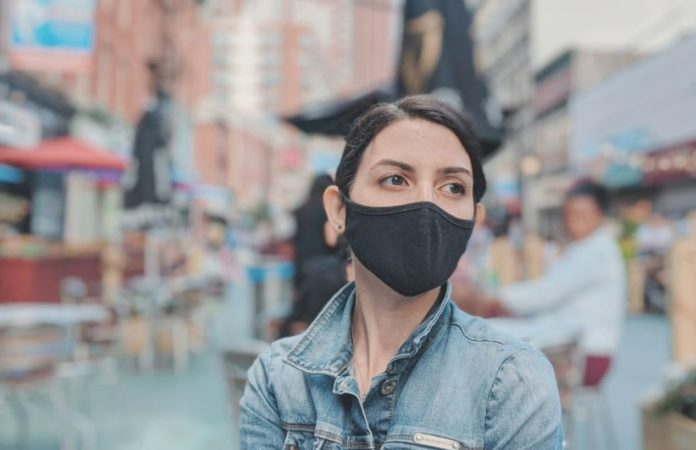Some countries have started enhanced programs to make sure as many people as possible are vaccinated against coronavirus 2019 (COVID-19). However, many of the new strains, such as Delta and Beta, have shown that they can get around vaccine-induced immunity, which is why they are so dangerous.
A team of researchers from ImmunityBio, Inc. have been looking into heterologous vaccines (a mixture of two distinct vaccines) as a potential answer to this problem.
A next-generation human adenovirus serotype 5 (hAd5)-vectored dual-antigen spike (S) and nucleocapsid (N) vaccine (AdS+N) and a self-amplifying and -adjuvanted S RNA vaccine (SASA S) given by a nanostructured lipid carrier are the two vaccines.
To develop viral vaccine prototypes, the researchers used the next-generation vector hAd5. Additional deletions in the E2b region reduce expression of viral DNA polymerase and preterminal protein genes, inhibiting propagation in human cell lines. The AdS+N vaccine contains a spike protein sequence that has been modified with a fusion linker peptide sequence, as well as a nucleocapsid sequence that contains an increased T-cell stimulation domain (ESTD) signal that directs the translated nucleocapsid protein to the endosomal pathway. Because most mutations target the spike protein’s receptor-binding domain (RBD), targeting both the nucleocapsid and spike proteins lessens the probability that novel variations may be able to elude the immune response.
A saRNA replicon expressing the spike protein is used in the SASA S vaccination. The spike RNA sequence is codon-optimized and expresses both the wild-type spike protein and the D614G mutation, which is evident in a number of dominant types. A diproline mutation that stabilizes prefusion conformation is also inserted, and the RRAR furin cleavage site sequence is replaced with a QQAQ sequence.
The vaccines were injected into mice subcutaneously, and blood was taken and sera were extracted from each mouse. Splenocytes were extracted from the mice as well. The researchers stimulated the splenocytes with intracellular cytokine stimulation (ICS) and employed ELISpot assays to detect cytokines released by the same splenocytes. IgG antibody detection in mouse sera was accomplished using enzyme-linked immunosorbent assays (ELISAs), which investigated spike S1 domain binding, Delta spike S1 domain binding, and nucleocapsid protein binding. The researchers also tested the sera for their capacity to neutralize the wild-type, Delta, and Beta strains using lentiviral pseudovirus neutralization assays.
According to the ELISA results, mice given the SASA S vaccination in any regimen had the highest levels of anti-spike protein IgGs. Anti-nucleocapsid IgGs were produced in all animals that received vaccines containing the nucleocapsid proteins, as expected, but all showed identical degrees of reactivity to the nucleocapsid. SASA S vaccinated animals sera had the best levels of protection against both the Delta and wild-type spike proteins.
Serum IgG levels were undetectable in slightly more than half of the mice vaccinated just with the AdS+N vaccine. An AdS+N booster immunization given after a SASA S vaccination, on the other hand, increases Cd4+ and CD8+ T cell response, and mean antibody titers for this group were comparable to SASA S homologous vaccination. This was especially noticeable in CD8+ T cells, but it could be seen in both. When the Delta spike protein peptides were taken into consideration, the results were identical, but heterogeneous vaccination outperformed homogeneous vaccination. Only mice that had been at least partially vaccinated with the AdS + N injection showed any antigen response to the nucleotide protein antigen, and responses were identical whether the vaccination was homologous or heterologous.
The ELISpot assays revealed that animals given heterologous immunization had significantly larger numbers of spike protein-reactive IFN-gamma-secreting T cells than all other groups, with the exception of the SASA S homologue, which was only slightly lower. The IFN-gamma response to the nucleotide protein was equivalent for both homologous immunization with AdS + N and heterologous vaccination with both doses. The pseudovirus neutralization assays revealed that homologous vaccination from either group could successfully neutralize all pseudovirus variants, although the AdS + N group had a decreased capability for all strains. Once again, heterologous immunization with AdS + N as a booster for SASA S proved more successful than SASA S as a booster for AdS + N.
The authors emphasize that their work strength of the study that heterologous vaccination can boost immune response to viral infection, which is consistent with multiple other studies that have found comparable results. While heterologous vaccinations were not always considerably better than homologous vaccinations, they seldom generated a lower response and, in some circumstances, exhibited significant benefits, such as in the CD4+ and CD8+ responses. This finding could be extremely useful for vaccine manufacturers and public health regulators, and it could provide another way to protect people from COVID-19.
*Source: https://doi.org/10.1101/2021.11.29.470440
Image Credit:
You were reading: Study finds another way to protect people from COVID-19 that boosts T-cell responses and kills virus variants
*bioRxiv offers preliminary scientific studies that have not been peer-reviewed and should not be regarded as conclusive, should not be used to guide clinical practice/health-related behavior, and should not be seen as established information.
